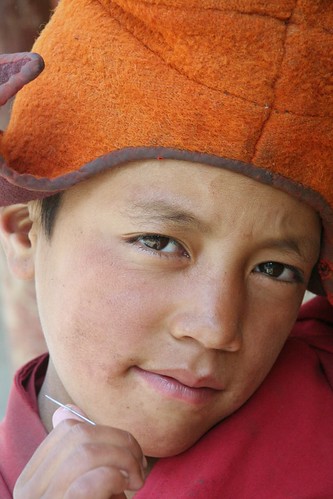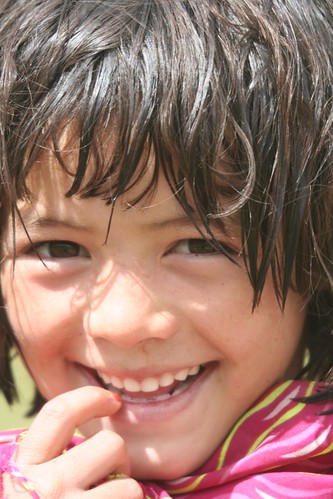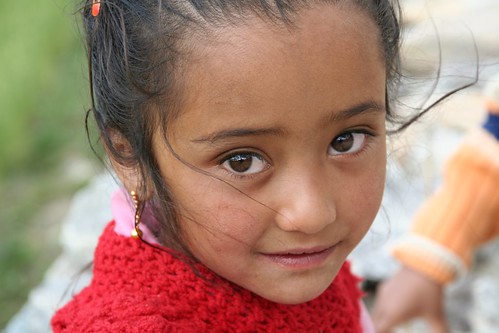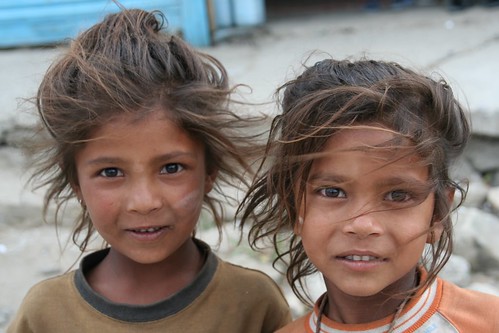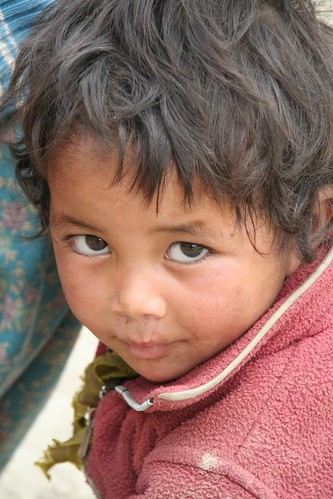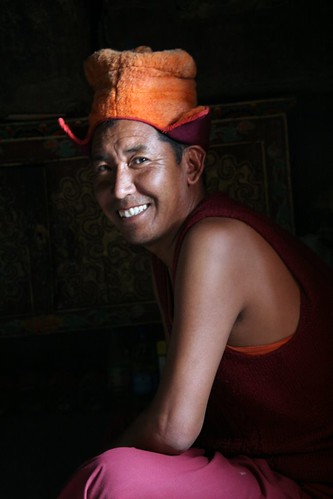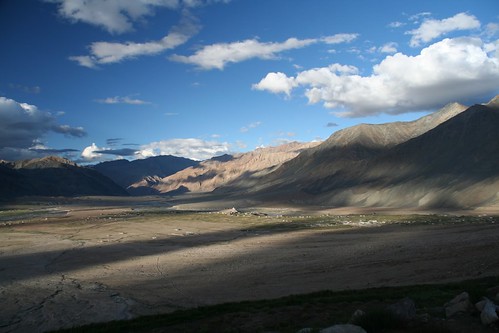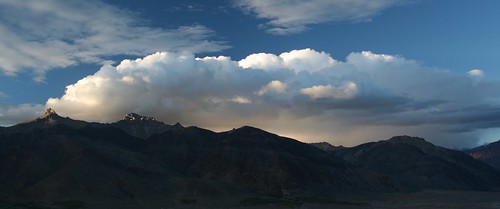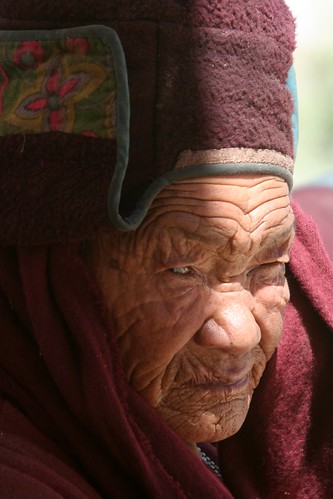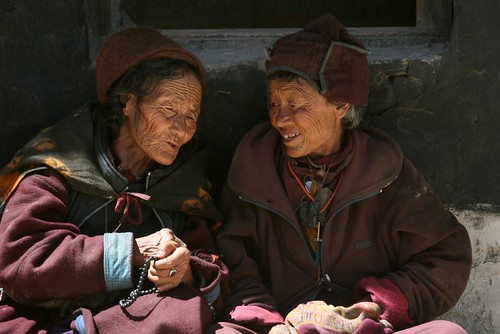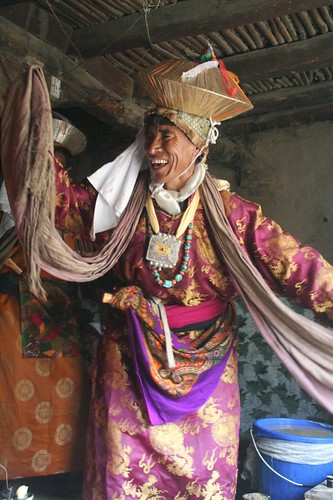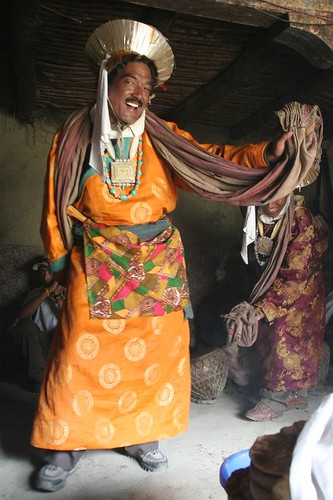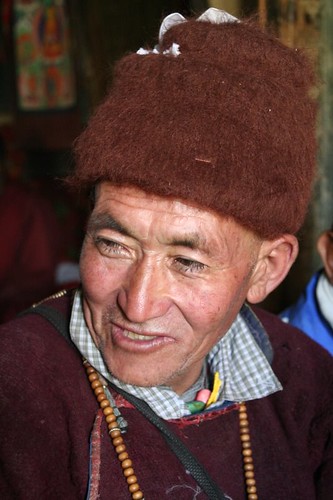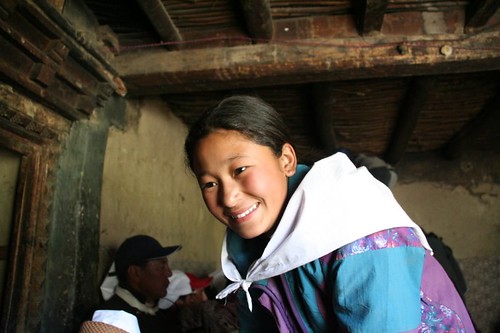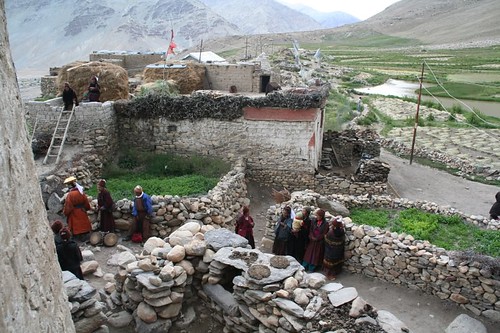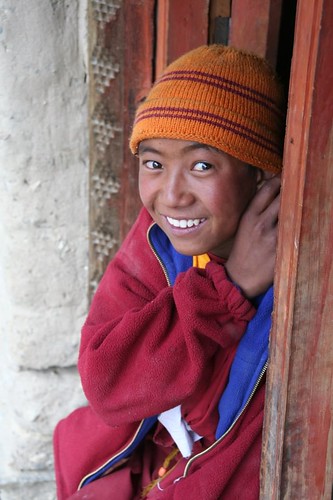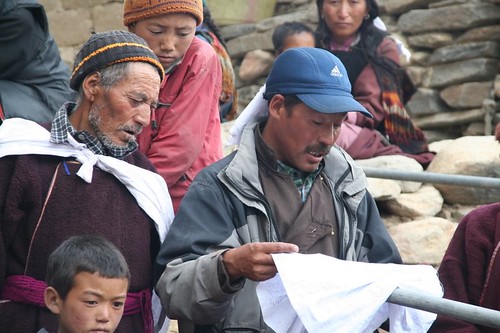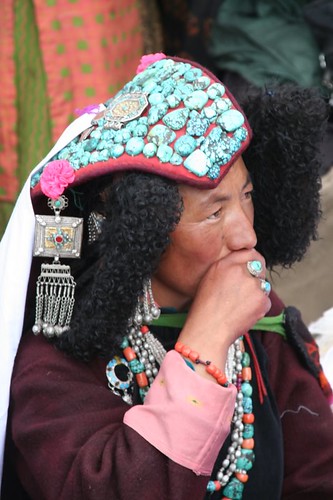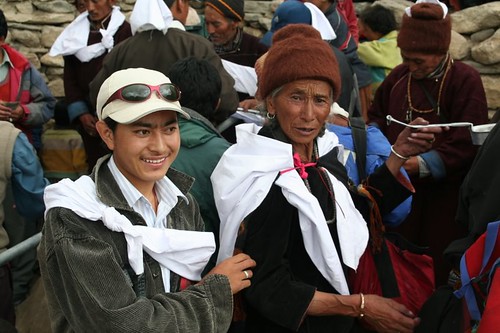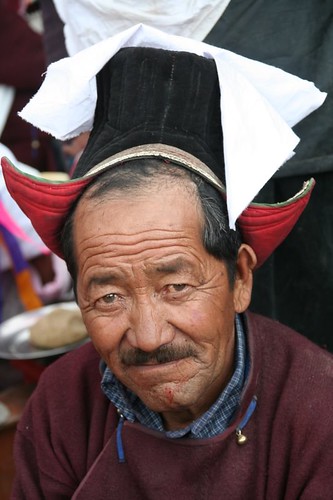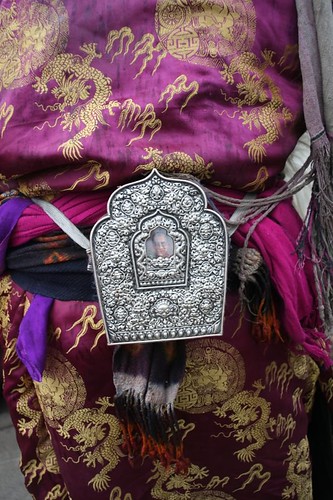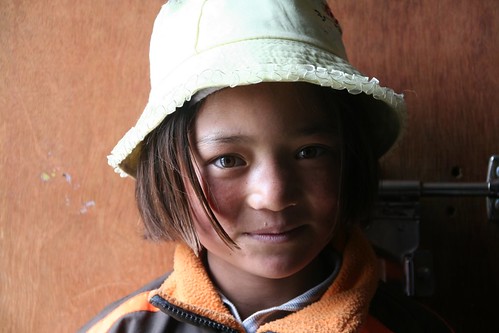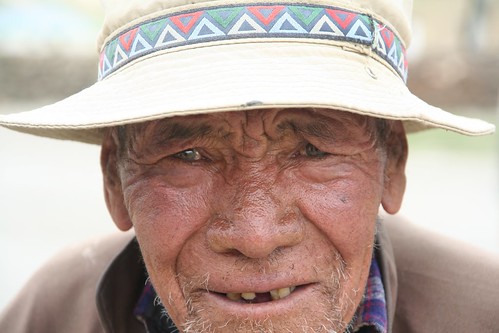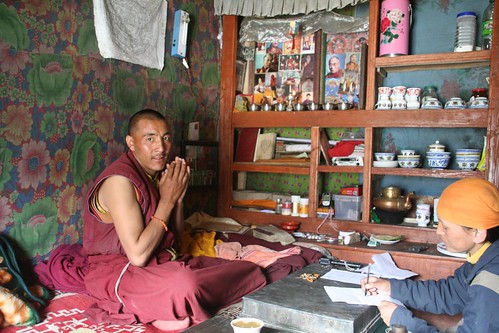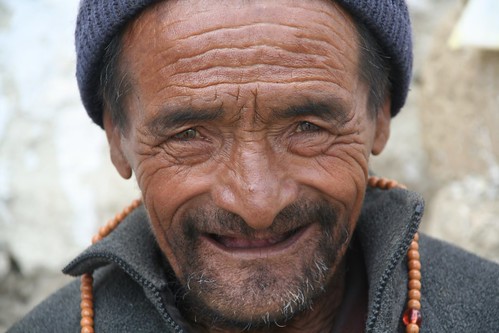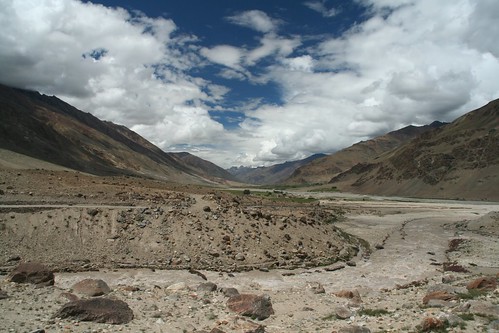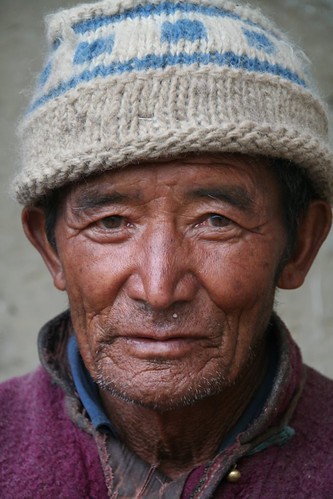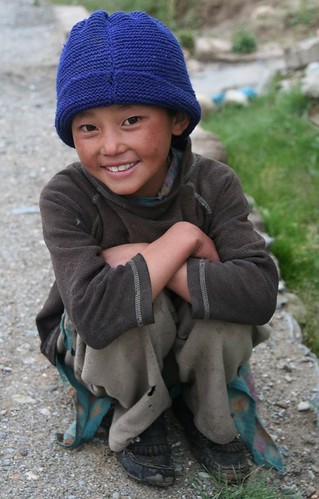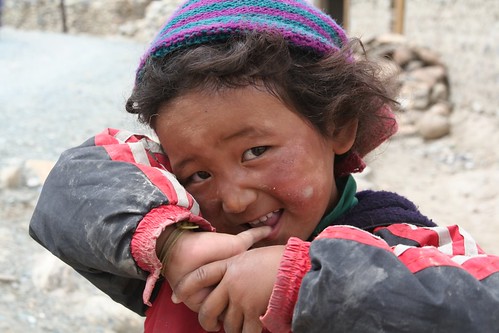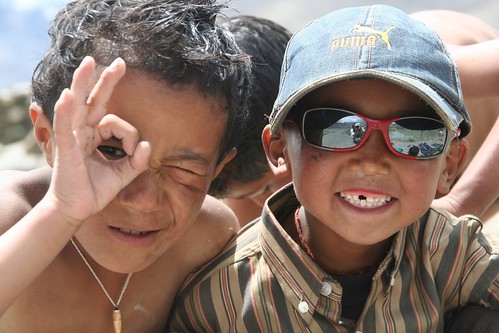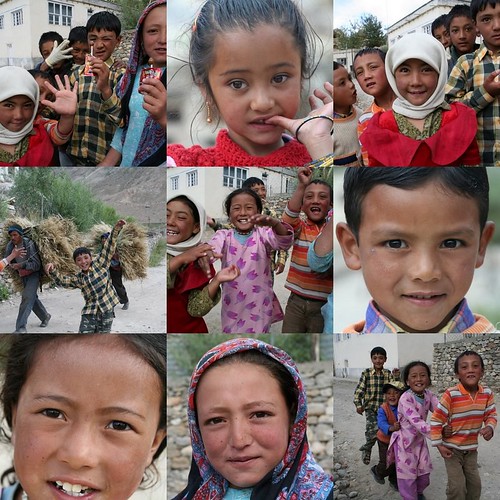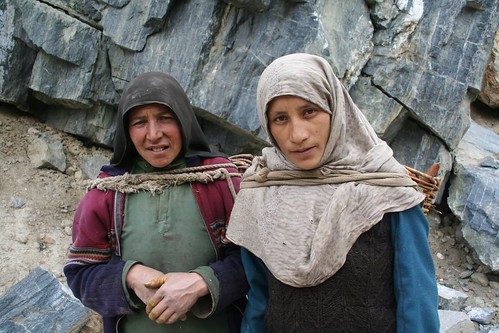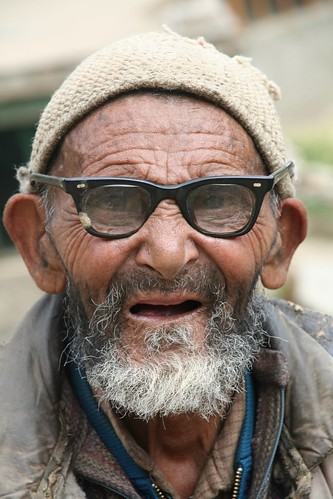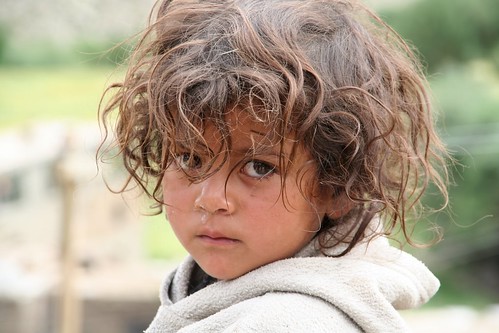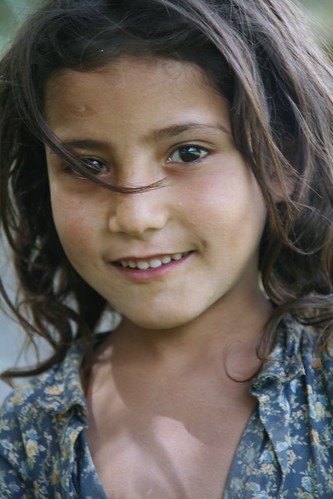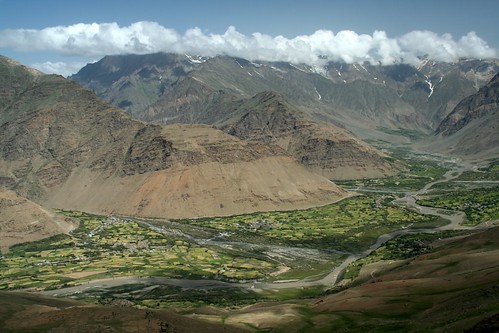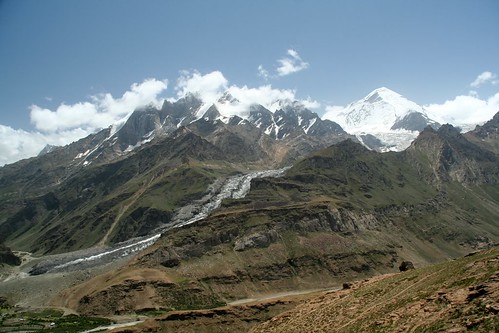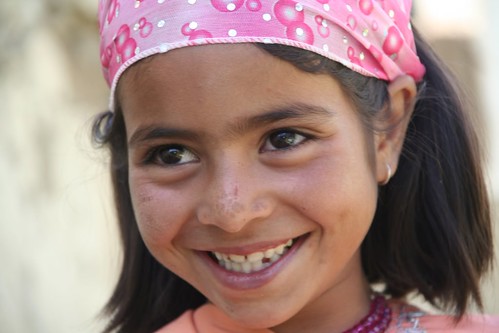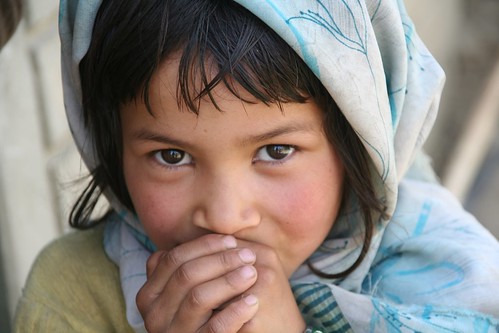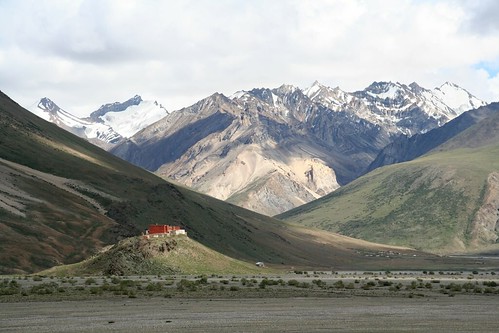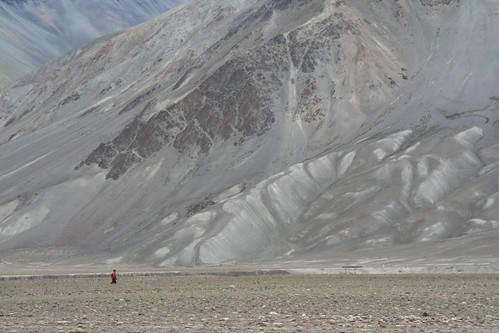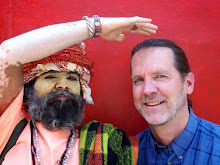I wandered into a tiny village a few days ago, and met a Buddhist nun who spoke fluent English. She said, "Go to the third house and ask for Sonam. She's my sister, and she'll make you a cup of tea. If you want." Yeah, I want! It seemed a little forward, but I took up the offer and went looking for Sonam, who turned out to be warm and inviting, as is the norm in these parts.
There was some ceremony going on inside the house, with a monk and family members chanting from Tibetan Buddhist texts. Sonam, who just happened to be beautiful, said they were praying for her marriage. Wow! A ceremony to try to get her married on the very day that a handsome stranger walks in the door?! What are the odds? Just before I was about to call her father "Dad" I learned that she was getting married in two days. Oh. Sniff.
So I went to the wedding two days later, invited this time, and felt like the fly on the wall that I always wanted to be in a situation like this. The little village of 16 houses looks ancient and timeless, and the family had no idea how old it was or how long their ancestors had been there. The two-story houses are built out of non-reinforced adobe - really just dried blocks of sandy mud. The floors and ceilings are supported by logs, limbs, and twigs, and covered with packed dirt. They're not designed for heavy rain, and a few days ago a ceiling collapsed in a nearby village, killing two children.
There were no disco balls or lighted dance floors at this wedding. I could imagine that the format hasn't changed much in hundreds of years. The only dancing, which you'll see in the photos, were three older men in elaborate costumes accompanied by loud and enthusiastic drumming. Everyone else sat around the edge of the room. The women's role was to encourage/insist that the men drink more chang, a local milky-colored brew somewhere between beer and wine, but not as strong. The men's role was to resist the chang overture, then give in and drink some more. Some of the costumed men conked out when they took a break from dancing, and the women would try to wake them up to drink more chang.
An important part of the ceremony is the bride appearing disconsolate, because she's leaving her family to go to her husband's house and village. (In this case, his village was only one mile away.) A local told me before the wedding that it's not really a sad event, it's just a tradition to act that way. So when Sonam started weeping loudly and practically hyperventilating, it seemed a little forced, and kind of cute. But then I noticed that the older women started covering their faces with their hands. And Sonam's father, who looked a little like Anthony Quinn (Zorba of Zanskar?) shook his head slightly, and brushed away tears, too. The tears were real, and I realized that there wasn't a dry eye in the place. It's much too simple to say that it's just tradition; it felt like the tears and sadness went much deeper than that. I can't say what it represented for the older folks, but it seemed to touch something deep. Sonam kept her head down and covered, and was either crying or silent, the whole time. I never even caught a glimpse of her on her wedding day.
The party moved outside, where gifts were taken out of a trunk while the donor's name was called out, accompanied by shouts of "Jule!" That was followed by more drumming and dancing, while the old women plied us with chang, which we drank out of a single cupped hand.
The dancers continued until it was almost dark, just to make scampering down the steep and rocky hill more dramatic. (That's total B.S., actually - it's nothing to them, and only dramatic to me.) A procession was headed from the small village up the hill down to Padum, the groom's village. By the time we all piled into the three jeeps, it was dark and we got lost going the 1/2 mile to the road. We crossed a couple of rivers and drove downstream through one river for about 100 yards. After we found our way, we had to wait 30 minutes while we waited for the third jeep that got separated from us. Just a few mintues later I was dropped off in front of the internet shop, in a town that has no phone, and only three hours of dim electricity a day. The mind boggles.
Before I ever traveled, I used to flip through those beautiful adventure travel brochures, with photos of spectacular scenery and exotic cultures, and I'd get butterflies. I think this is what I was dreaming about.
Love,
Dave
There are 13 photos below. The light inside the house was challenging, since it came from a single window.
Sonam's niece.
A view of the village from the house where the wedding was held.
A young monk who was at the wedding.
Sonam's father on the left and another relative reading from the list of the gifts received.
Sonam's cousin and attendant for the day.
Sonam's younger brother and mother.
Each of the dancers wore a silver box like this on his back. It has a small picture of the Dalai Lama.
A view of the village from the other direction. You can see the drummers in the foreground, and the dancers on the right.
(The End)
